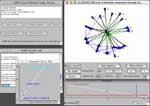Nice idea, building collaborative software for tagging and tracking commercial products. “Network of Integrated Consumer Knowledge” Eugene based software co. http://www.grasscommons.org/
Grass Commons, a 501(c)3 public interest charity, is building pipelines between those who can generate information about products and companies and those who can use that information to build a more sustainable economy and a better world.
Grasscommons seems to have a collaborative relationship with Hooze,
Hooze.org is about collaborating to gather useful, reliable info about the products and companies that are shaping our world.
Hooze is the world’s first public wagging site. Wagging combines wiki and tagging in unique ways so that communities of users can organically develop ways of organizing and presenting information. The combo cards at the bottom of this page are an example of how wagging differs from other tools.

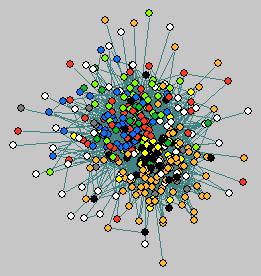
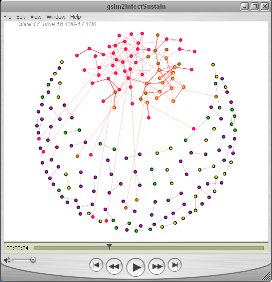
 I worked for a year or so as a consultant at
I worked for a year or so as a consultant at 
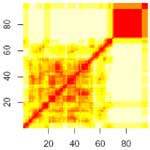 The figure here is a distance matrix of conversation networks extracted as 2.5 minute sliding windows for one class period. Each row (or column) of the matrix shows the comparison of a single slice network to all of the others. White indicates large differences between networks, red means low. Time moves from the lower left to the upper right, so the red diagonal shows that each slice is similar to itself. This picture seems to show a period of varying structure for the first 2/3 of the class, and a final segment that is very different.
The figure here is a distance matrix of conversation networks extracted as 2.5 minute sliding windows for one class period. Each row (or column) of the matrix shows the comparison of a single slice network to all of the others. White indicates large differences between networks, red means low. Time moves from the lower left to the upper right, so the red diagonal shows that each slice is similar to itself. This picture seems to show a period of varying structure for the first 2/3 of the class, and a final segment that is very different. 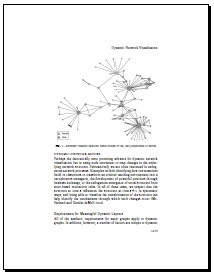
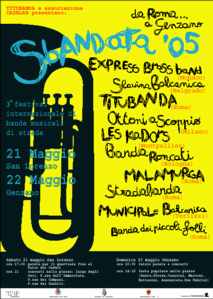 If I understand right, “sbandata” means something like “to drift” or “to swerve” as in “the drunken musicians swerved into the street, colliding with pedestrians and tangling traffic with continuous high-decibal acoustic music and general joyus mayhem”. Or something like “he falls in love but lost the mind and is wandering in the street.” Very apt description. I don’t really know much about who did the organizing, I think the coordination was done by folks from the Roman band Titubanda (probably the best street band in Italy), with some financial support from the city of Rome. I think the city gave us the food and wine anyway, as well as somehow supporting/permiting the squated/ceeded ex-elementary school where we slept (those of us who did) on the floor. Everything seemd to appear magically out of delightful anarchy.
If I understand right, “sbandata” means something like “to drift” or “to swerve” as in “the drunken musicians swerved into the street, colliding with pedestrians and tangling traffic with continuous high-decibal acoustic music and general joyus mayhem”. Or something like “he falls in love but lost the mind and is wandering in the street.” Very apt description. I don’t really know much about who did the organizing, I think the coordination was done by folks from the Roman band Titubanda (probably the best street band in Italy), with some financial support from the city of Rome. I think the city gave us the food and wine anyway, as well as somehow supporting/permiting the squated/ceeded ex-elementary school where we slept (those of us who did) on the floor. Everything seemd to appear magically out of delightful anarchy.